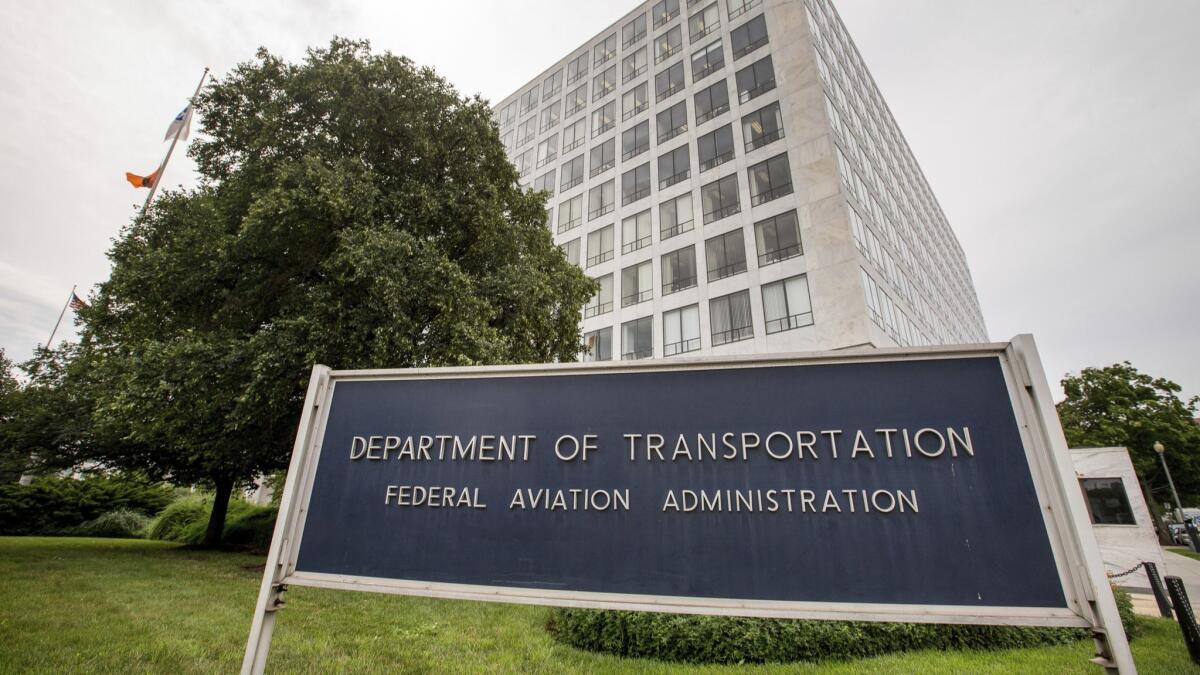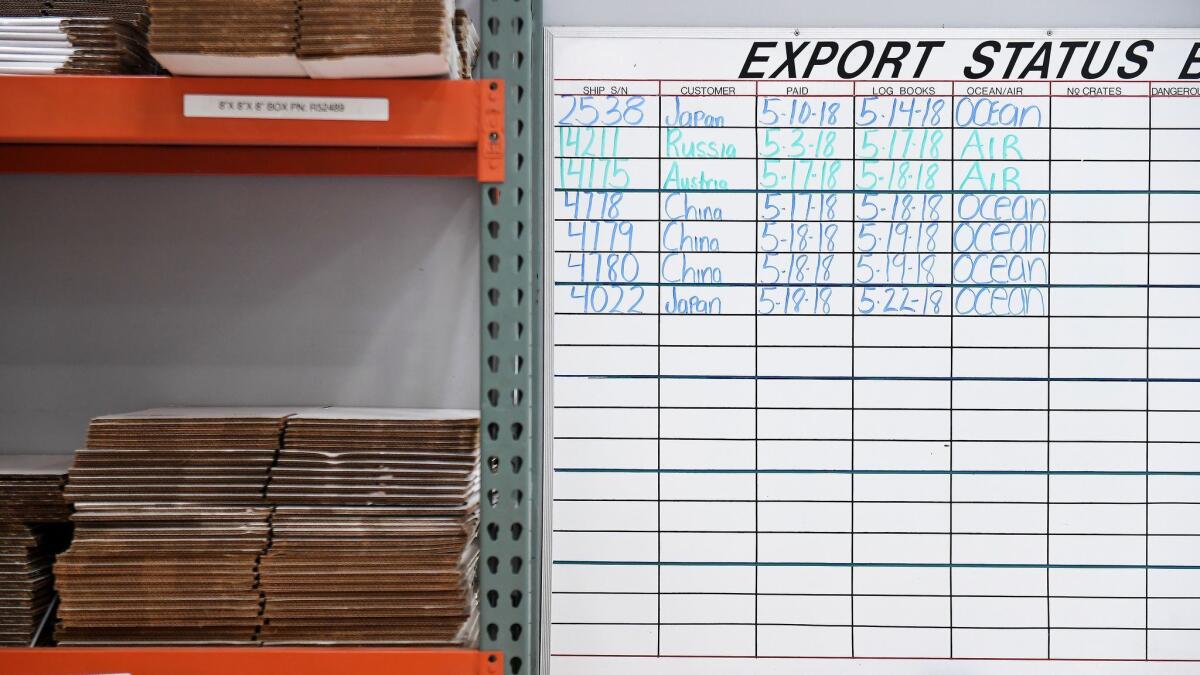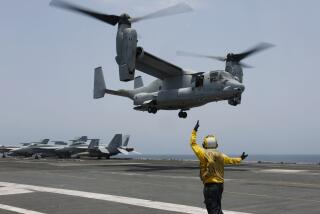With the Robinson R44’s safety issues, the FAA has taken a more hands-off approach

In one low-impact crash after another, pilots and passengers in Robinson R44 helicopters were burning to death when the fuel tanks ruptured and burst into flames.
Australian aviation regulators grew so alarmed that in 2013 they ordered all R44s grounded until their all-aluminum tanks were reinforced. Officials in New Zealand, South Africa and across Europe also took steps to make the helicopters safer, pushing for tank upgrades.
In the United States, the Federal Aviation Administration took a less aggressive approach.
In 2014, the agency concluded that the R44 was statistically no more prone to fatal post-crash fires than other helicopters designed and certified by the government before 1994. It rejected a recommendation by the National Transportation Safety Board to make the tank retrofits mandatory.
The FAA, whose mission is “to provide the safest, most efficient aerospace system in the world,” insists it aggressively monitors aircraft manufacturers and operators.
“The FAA does not hesitate to take action when circumstances warrant,” it said in a statement to The Times.
On several key safety issues that have dogged the R44, however, the agency has taken a more hands-off approach than its foreign counterparts.
Loss of control, lack of attention
One of the first major tests for the FAA involving Torrance-based Robinson Helicopter Co. occurred in the early 1990s. The NTSB investigated nearly three dozen fatal crashes in which pilots suddenly lost control, and after ruling out common mechanical failures asked the FAA to ground all Robinson helicopters pending further study.
The FAA responded with Special Flight Aviation Regulation 73, which required extra instruction and special flight checks for pilots of the four-seat R44 and the two-seat R22. Among the topics it addresses is mast-bumping, which causes main rotor blades to break off or slice through the cockpit or tail cone.
Since the adoption of the regulation in 1995, Robinson mast-bumping accidents “have declined markedly,” according to the FAA. The Times’ analysis of NTSB accident reports identified 10 fatal Robinson crashes since then in which investigators noted signs of mast-bumping.
The problem also has persisted in New Zealand, which took a harder line after tallying 14 fatal mast-bumping accidents from 1996 to 2015, all in Robinson helicopters.
In October 2016, its Transport Accident Investigation Commission placed Robinson mast-bumping on its watch list of top safety concerns, and several government agencies have since banned the use of the helicopters.
The company has sought to lift the watch-list designation, insisting that mast-bumping accidents are “entirely avoidable” when pilots use good judgment and follow operating procedures.
“Our fleet of helicopters have flown 35 million flight hours worldwide,” safety director Bob Muse told Radio New Zealand in March. “If there was a design issue or a flaw in it, it would absolutely be right in our face.”
The New Zealand government hasn’t budged.
Foreign aviation authorities also have zeroed in on other Robinson flight-control issues — and criticized the FAA for failing to address them.
Ran Lapid, a former Israeli Air Force helicopter pilot who flew Boeing 747s for El Al Airlines, had logged more than 1,000 hours in R44s when the one he was flying on Nov. 24, 2009, crashed into the Mediterranean near Netanya, Israel. He and all three passengers were killed.
Accident investigators found that one of the main rotor blades had “delaminated,” or separated at the seams of its stainless-steel skin. The damaged blade flapped down and cut off the tail boom.
“The failure occurred abruptly, during a normal cruise flight, leaving those on board the helicopter with absolutely no chance of survival,” Israel’s Ministry of Transportation and Aviation Safety said in a 125-page report.
It concluded that Robinson Helicopter Co. and the FAA had failed to remedy a known and potentially lethal condition.
Three years before Lapid’s crash, four people died in a similar accident in the Dominican Republic. That crash was soon followed by another in which a failed R44 rotor blade sent a helicopter into the ocean in Fiji, killing the pilot.
Those accidents and others were well known to the FAA, which responded in 2007 by directing Robinson operators to visually inspect and routinely test the blades by tapping them with a coin — a quarter dated 1965 or later — to listen for evidence of flaws in their bonding.
The NTSB wanted the FAA to order Robinson to use a more reliable test, but the agency declined, saying the coin method was the best available.
The Israeli investigation of Lapid’s crash found that the FAA and the company had “adopted a certain degree of repression” about the delamination issue.
“To a significant extent, both the FAA and the helicopter manufacturer were aware of the fatal failure instances that occurred in several of the accidents worldwide, but for various reasons, both provided explanations and diagnoses holding to the view that there was no catastrophic problem,” the report stated.
President Kurt Robinson disputed the Israelis’ conclusions and said his company, which attributed Lapid’s crash to poor maintenance, had issued service bulletins calling for blade inspections to detect flaws.
“To say we were repressing information, that is just unfounded and unfair,” he said.
The FAA declined to comment on the Israeli investigation, but a spokesman for the agency said its directives on testing Robinson blades “shows we recognized an unsafe condition existed and took steps to address it.”
In December 2014, after at least a dozen blade failures around the world, the FAA determined that “debonding continues to occur” and ordered the replacement of blades on 1,290 affected R22s and 1,353 R44s, at a total cost to their owners of more than $122 million.

Vulnerability of R44 tanks well known to U.S. regulators
Nowhere is the FAA’s approach more evident than in its response to Robinson’s all-aluminum fuel tanks, prone to rupture in low-impact crashes and rollover accidents.
The first of dozens of deaths and serious burn injuries occurred within months of the first R44 moving off the production line.
On July 31, 1993, as Benjamin Venti Jr. took off at El Monte Airport with two passengers, the main control stick failed and his helicopter veered down, hit the runway and erupted into a fireball as it skidded along, NTSB records show.
“My son and his two best friends from college were killed,” said Benjamin “Frank” Venti Sr. “It was a horrible thing.”
Autopsies revealed that the pilot and one passenger died from burns and smoke inhalation. The other man was severely burned but died of a lacerated aorta.
It took the company 16 years to begin building new R44s with more crashworthy tanks lined with flexible bladders.
The next year, 2010, the company recommended the bladders as a voluntary retrofit for older R44s, at owners’ expense. It offered the parts for about $6,800, which Kurt Robinson said was below cost.
He said the company could not have addressed the tank issue any faster because the technology was not available.
Even today, some owners have not reinforced their tanks, Robinson said. The FAA has never ordered it.
By contrast, Australian regulators took much stronger action after investigating two R44 post-crash fires.
The first was near Sydney in February 2012, when the door of an R44 popped open during takeoff and the pilot reached out to close it and lost control. The tail rotor struck the ground, and the fuel tank breached and exploded.
“The fire spread quickly and its size and intensity gave no time for the occupants to successfully release themselves from the wreckage or for the bystanders to be able to extinguish the flames,” Australia’s Transportation Safety Bureau reported.
The next year, in March 2013, four retired Australian scientists burned to death in another low-impact crash south of Sydney when their R44 rolled over and caught fire after clipping some trees while landing.
Regulators concluded that “R44 accidents result in a significantly higher proportion of post-impact fire than other similar helicopter types.” That April, they ordered all R44s grounded in Australia until retrofitted.
In 2014. the NTSB called on the FAA to do the same in the U.S. By then, Robinson Helicopter Co. also had asked the FAA to mandate the upgrades.
But the agency refused, based on its analysis of five years of data showing that R44s “had no statistically higher percentage of fatalities as a result of post-impact fires” than other helicopters designed and certified before 1994.
That was the year the FAA required more resilient fuel systems for all newly designed helicopters. But it exempted models certified before 1994, including the R44.
The NTSB criticized the FAA for comparing the R44 only to other models that also were built to “potentially unsafe standards.”
Today the FAA stands by its decisions on the R44 tanks — and all other Robinson issues.
“The FAA believes NTSB recommendations concerning Robinson helicopters have been effectively addressed,” it said.
This is the second part of a Los Angeles Times investigation. Read the first part.
https://twitter.com/kchristensenLAT
More to Read
Inside the business of entertainment
The Wide Shot brings you news, analysis and insights on everything from streaming wars to production — and what it all means for the future.
You may occasionally receive promotional content from the Los Angeles Times.











